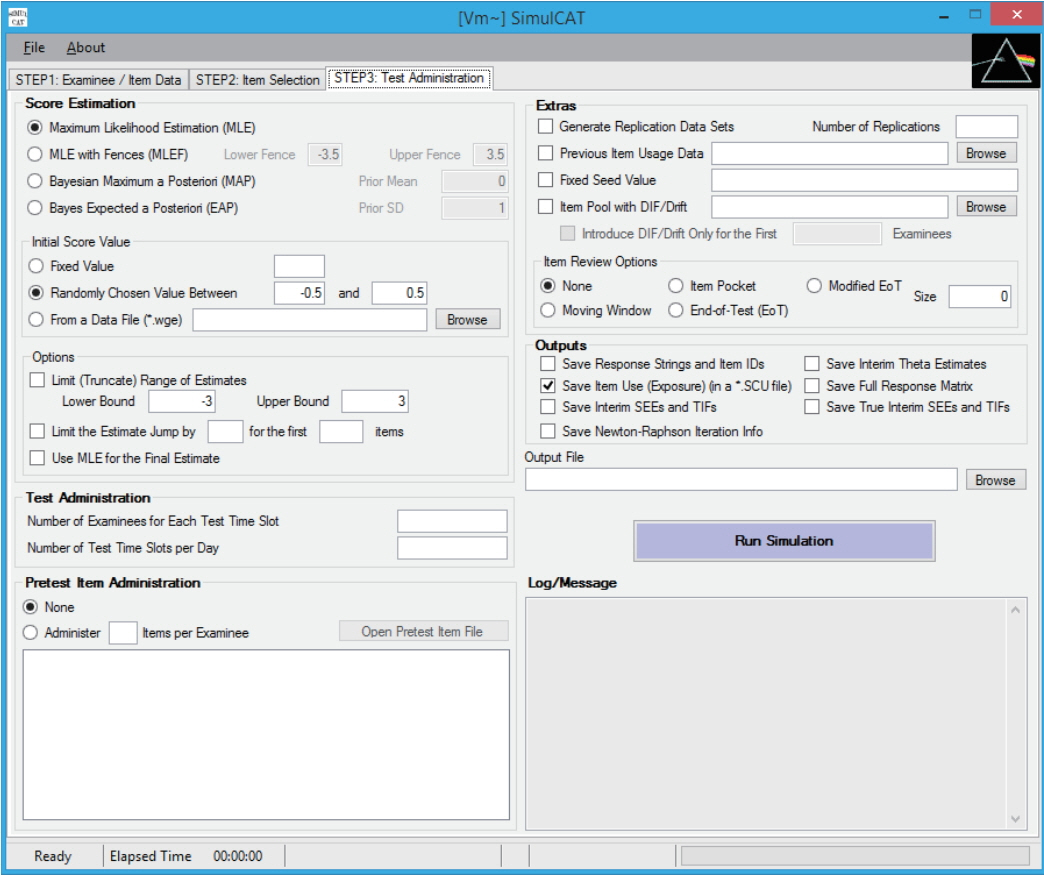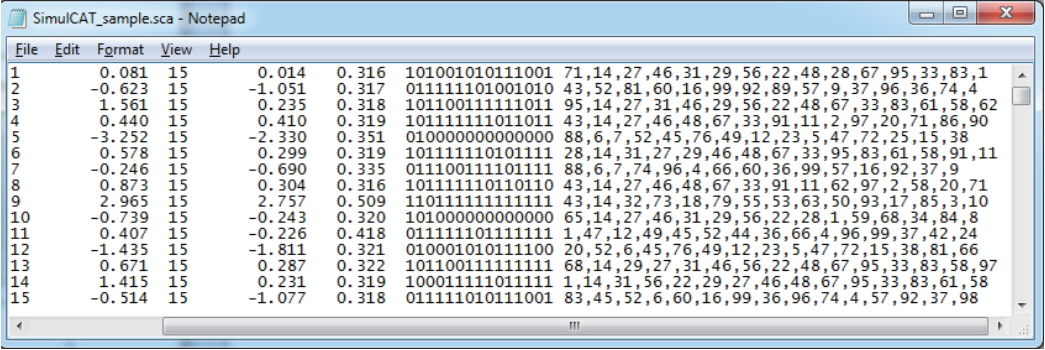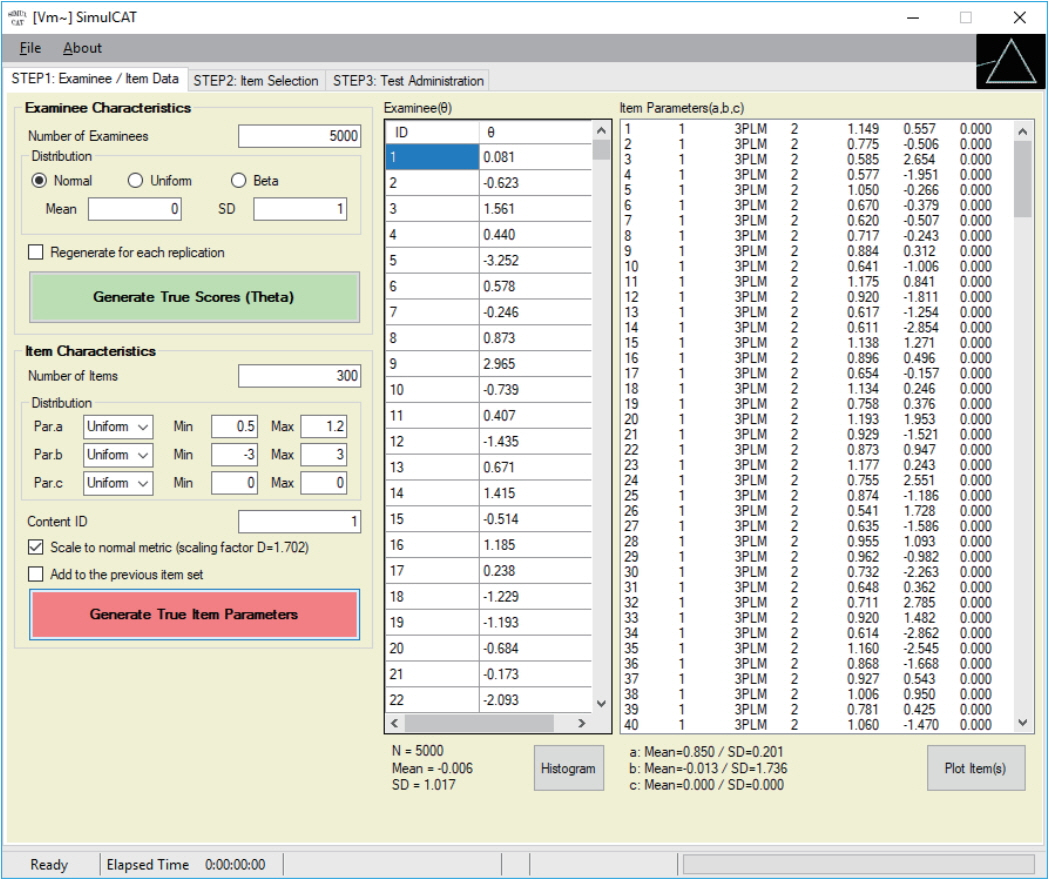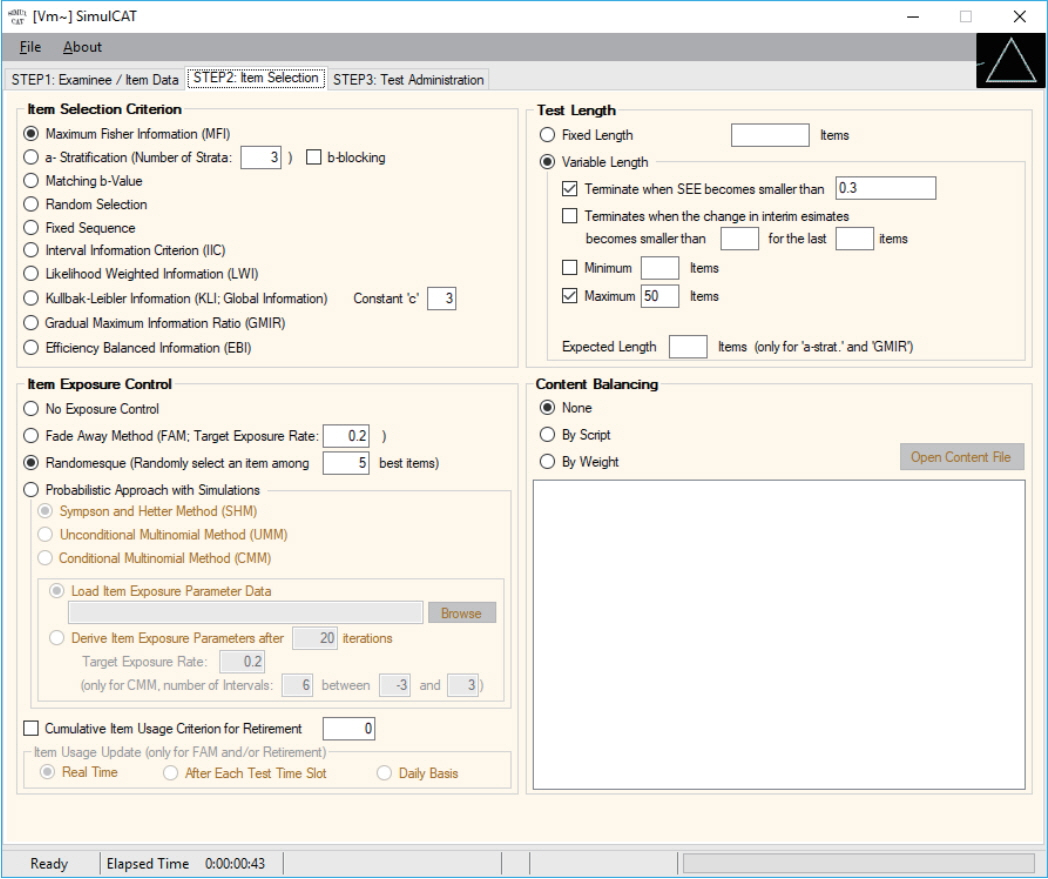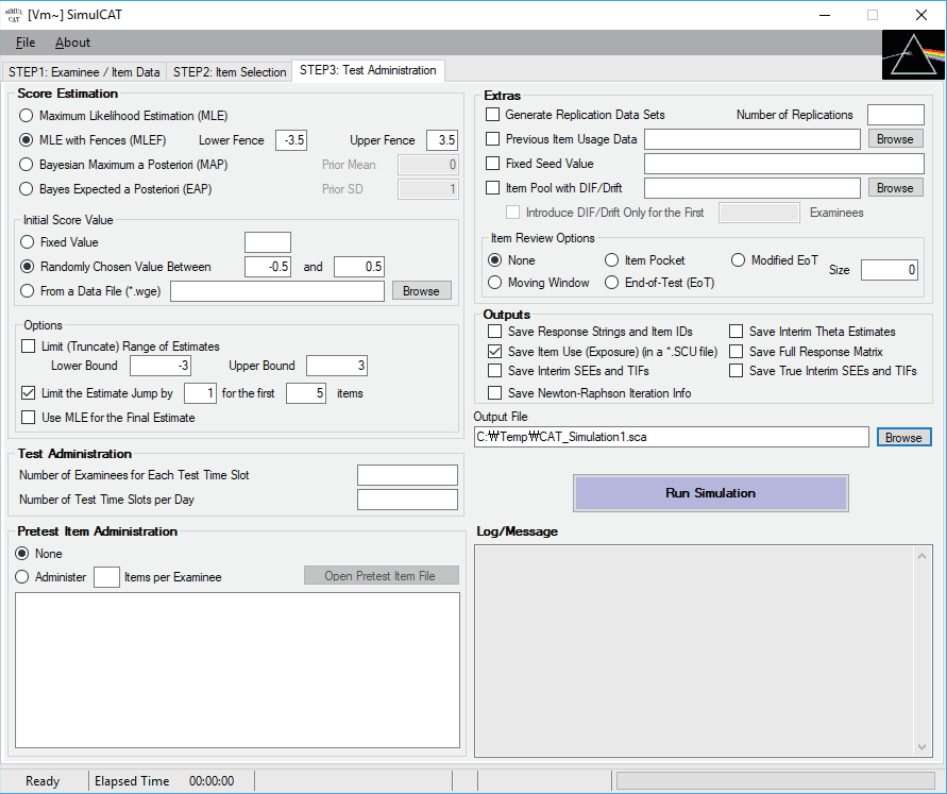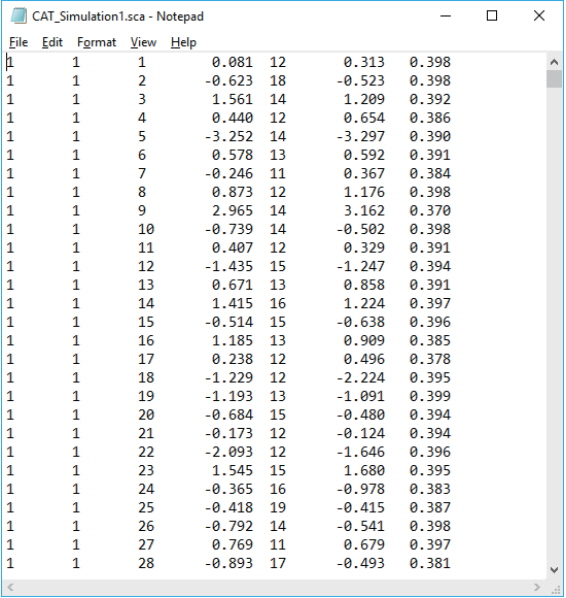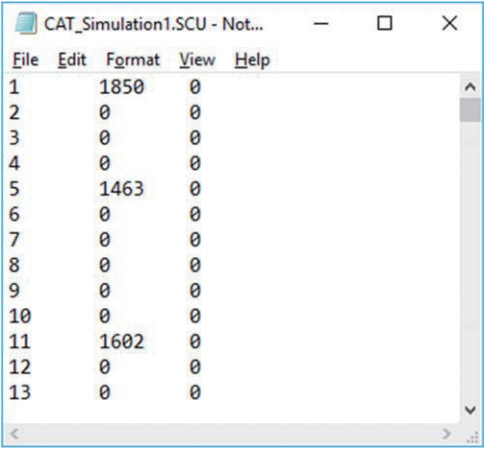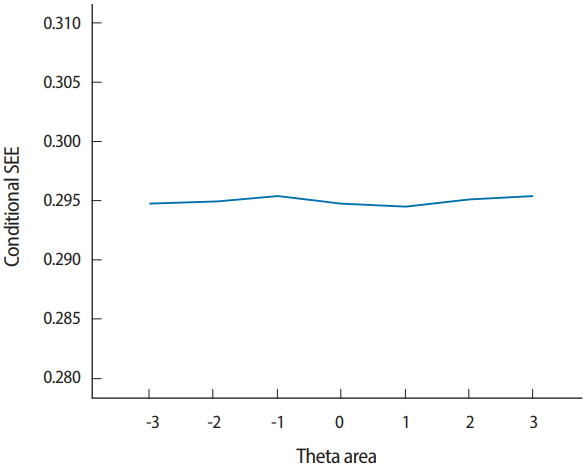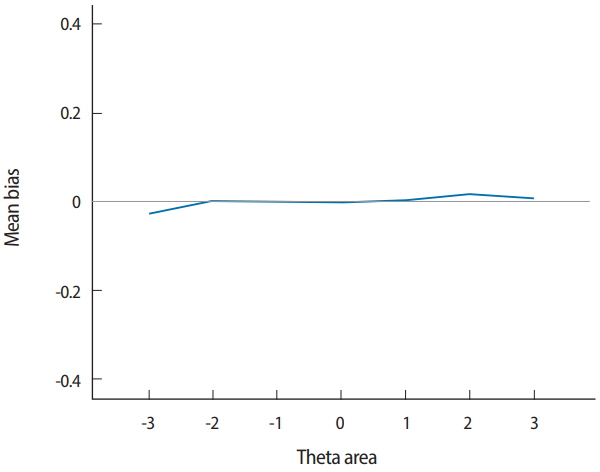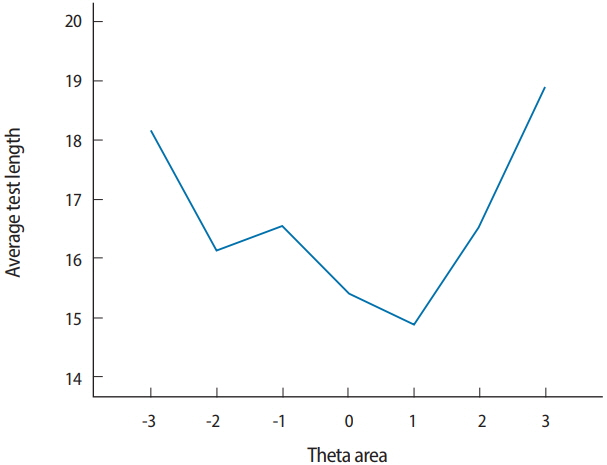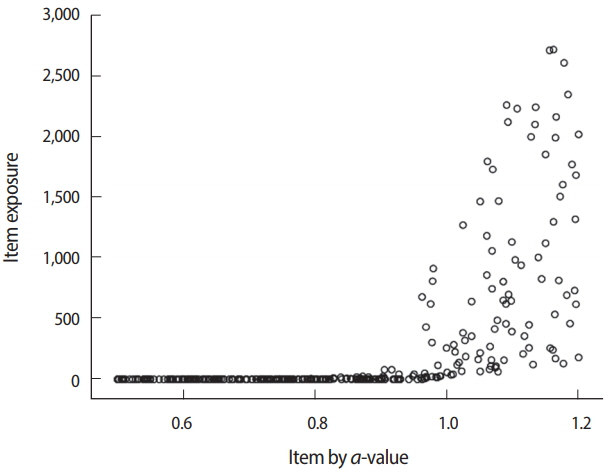J Educ Eval Health Prof.
2018;15:20. 10.3352/jeehp.2018.15.20.
Conducting simulation studies for computerized adaptive testing using SimulCAT: an instructional piece
- Affiliations
-
- 1Graduate Management Admission Council, Reston, VA, USA. truetheta@gmail.com
- KMID: 2439276
- DOI: http://doi.org/10.3352/jeehp.2018.15.20
Abstract
- Computerized adaptive testing (CAT) technology is widely used in a variety of licensing and certification examinations administered to health professionals in the United States. Many more countries worldwide are expected to adopt CAT for their national licensing examinations for health professionals due to its reduced test time and more accurate estimation of a test-taker's performance ability. Continuous improvements to CAT algorithms promote the stability and reliability of the results of such examinations. For this reason, conducting simulation studies is a critically important component of evaluating the design of CAT programs and their implementation. This report introduces the principles of SimulCAT, a software program developed for conducting CAT simulation studies. The key evaluation criteria for CAT simulation studies are explained and some guidelines are offered for practitioners and test developers. A step-by-step tutorial example of a SimulCAT run is also presented. The SimulCAT program supports most of the methods used for the 3 key components of item selection in CAT: the item selection criterion, item exposure control, and content balancing. Methods for determining the test length (fixed or variable) and score estimation algorithms are also covered. The simulation studies presented include output files for the response string, item use, standard error of estimation, Newton-Raphson iteration information, theta estimation, the full response matrix, and the true standard error of estimation. In CAT simulations, one condition cannot be generalized to another; therefore, it is recommended that practitioners perform CAT simulation studies in each stage of CAT development.
Keyword
Figure
Cited by 1 articles
-
Updates from 2018: Being indexed in Embase, becoming an affiliated journal of the World Federation for Medical Education, implementing an optional open data policy, adopting principles of transparency and best practice in scholarly publishing, and appreciation to reviewers
Sun Huh, A Ra Cho
J Educ Eval Health Prof. 2018;15:36. doi: 10.3352/jeehp.2018.15.36.
Reference
-
References
1. Han KCT. Components of the item selection algorithm in computerized adaptive testing. J Educ Eval Health Prof. 2018; 15:7. https://doi.org/10.3352/jeehp.2018.15.7.
Article2. Han KT. SimulCAT: Windows software for simulating computerized adaptive test administration. Appl Psychol Meas. 2012; 36:64–66. https://doi.org/10.1177/0146621611414407.
Article3. Han KT. Maximum likelihood score estimation method with fences for short-length tests and computerized adaptive tests. Appl Psychol Meas. 2016; 40:289–301. https://doi.org/10.1177/0146621616631317.
Article4. Weiss DJ. Improving measurement quality and efficiency with adaptive testing. Appl Psychol Meas. 1982; 6:473–492. https://doi.org/10.1177/014662168200600408.
Article5. Chang HH, Ying Z. Alpha-stratified multistage computerized adaptive testing. Appl Psychol Meas. 1999; 23:211–222. https://doi.org/10.1177/01466219922031338.
Article6. Chang HH, Qian J, Ying Z. a-Stratified multistage computerized adaptive testing with b blocking. Appl Psychol Meas. 2001; 25:333–341. https://doi.org/10.1177/01466210122032181.
Article7. Chang HH, Ying Z. A global information approach to computerized adaptive testing. Appl Psychol Meas. 1996; 20:213–229. https://doi.org/10.1177/014662169602000303.
Article8. Veerkamp WJ, Berger MP. Some new item selection criteria for adaptive testing. J Educ Behav Stat. 1997; 22:203–226. https://doi.org/10.2307/1165378.
Article9. Han KT. A gradual maximum information ratio approach to item selection in computerized adaptive testing. Reston (VA): Graduate Management Admission Council;2009.10. Han KT. An efficiency balanced information criterion for item selection in computerized adaptive testing. J Educ Meas. 2012; 49:225–246. https://doi.org/10.1111/j.1745-3984.2012.00173.x.
Article11. Kingsbury GG, Zara AR. Procedures for selecting items for computerized adaptive tests. Appl Meas Educ. 1989; 2:359–375. https://doi.org/10.1207/s15324818ame0204_6.
Article12. Sympson JB, Hetter RD. Controlling item-exposure rates in computerized adaptive testing. In : Proceedings of the 27th Annual Meeting of the Military Testing Association; 1985 Oct 21-25; San Diego, USA. San Diego (CA). Navy Personnel Research and Development Centre. 1985; 973–977.13. Stocking ML, Lewis C. A new method of controlling item exposure in computerized adaptive testing. ETS Res Rep Ser. 1995; 1995:i–29. https://doi.org/10.1002/j.2333-8504.1995.tb01660.x.
Article14. Stocking ML, Lewis C. Controlling item exposure conditional on ability in computerized adaptive testing. J Educ Behav Stat. 1998; 23:57–75. https://doi.org/10.3102/10769986023001057.
Article15. Han KT. MSTGen: simulated data generator for multistage testing. Appl Psychol Meas. 2013; 37:666–668. https://doi.org/10.1177/0146621613499639.
Article16. Luecht RM, Nungester RJ. Some practical examples of computeradaptive sequential testing. J Educ Meas. 1998; 35:229–249. https://doi.org/10.1111/j.1745-3984.1998.tb00537.x.
Article
- Full Text Links
- Actions
-
Cited
- CITED
-
- Close
- Share
- Similar articles
-
- Can computerized tests be introduced to the Korean Medical Licensing Examination?
- Post-hoc simulation study of computerized adaptive testing for the Korean Medical Licensing Examination
- Estimation of an Examinee's Ability in the Web-Based Computerized Adaptive Testing Program IRT-CAT
- Comparison of real data and simulated data analysis of a stopping rule based on the standard error of measurement in computerized adaptive testing for medical examinations in Korea: a psychometric study
- Correlations between the scores of computerized adaptive testing, paper and pencil tests, and the Korean Medical Licensing Examination



